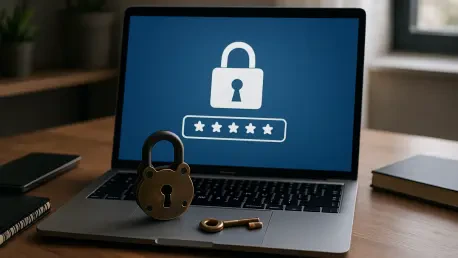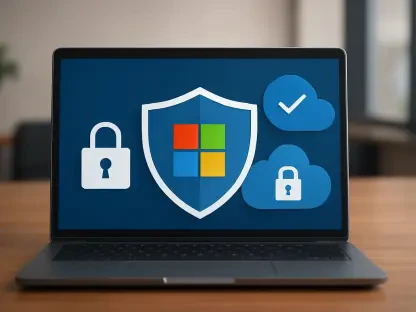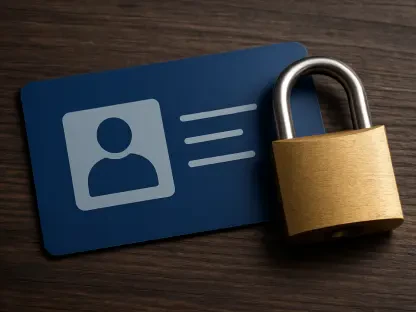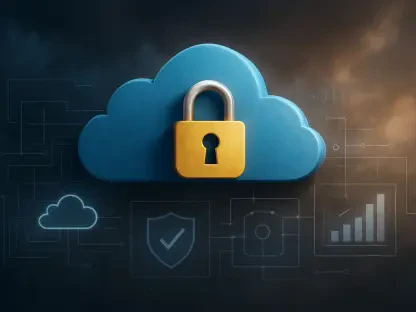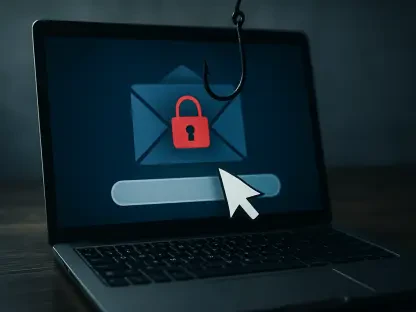Imagine a world where the frustration of forgotten passwords, sticky notes with scribbled login details, and the constant nag of “password must include a special character” rules are relics of the past, replaced by a seamless and secure alternative. Passkeys, an innovative technology spearheaded by the FIDO Alliance, are stepping in to transform this vision into reality by offering a secure and user-friendly alternative to traditional passwords. This shift isn’t merely a passing trend; it’s a critical response to the escalating vulnerabilities of passwords in a digital age plagued by relentless cyberattacks. As data breaches and phishing scams become more sophisticated, the need for a robust authentication method has never been more urgent. Passkeys promise not only to enhance security but also to simplify the way users interact with online platforms, potentially redefining digital identity protection for millions across the globe. This emerging solution is gaining traction as a cornerstone for safer online experiences, setting the stage for a deeper exploration of its mechanics and implications.
Why Passkeys Outshine Traditional Credentials
Robust Defense Against Cyber Threats
Passkeys bring a level of security to online authentication that passwords simply cannot match. By design, they are immune to many of the pitfalls that plague traditional credentials, such as being guessed or shared among users. Each passkey is uniquely linked to a specific website or app, ensuring it becomes useless on fraudulent phishing sites that mimic legitimate platforms. Furthermore, since passkeys are not stored on company servers, they remain out of reach during data breaches, significantly diminishing the value of stolen information to cybercriminals. This inherent resistance to common attack vectors positions passkeys as a formidable barrier in a landscape where digital threats loom large. As hacking techniques grow more advanced, the cryptographic foundation of passkeys offers a much-needed shield, reducing the risk of unauthorized access and protecting sensitive user data from falling into the wrong hands.
The impact of passkeys on cybersecurity extends beyond individual protection to broader systemic benefits. With traditional passwords, a single breach can expose countless user accounts, often leading to cascading effects across multiple services due to password reuse. Passkeys disrupt this cycle by eliminating the need for memorized strings of characters, replacing them with a dual-key system that prioritizes both security and simplicity. The public key resides with the service provider, while the private key stays securely on the user’s device or within a trusted password manager. This setup ensures that even if a malicious actor gains access to server data, there’s no usable credential to exploit. Such a design not only fortifies personal accounts but also reduces the overall burden on organizations to safeguard vast databases of passwords, marking a significant leap forward in the ongoing battle against cybercrime.
Persistent Risks and Necessary Safeguards
Despite their strengths, passkeys are not an all-encompassing solution to digital security challenges. Security expert Trevor Hilligoss from SpyCloud Labs points out a critical vulnerability: cookie hijacking. Even with passkeys in place, malware can steal validated browser cookies, allowing attackers to emulate an already authenticated session and bypass the need for login credentials altogether. This loophole underscores that while passkeys address many password-related issues, they cannot single-handedly eliminate all threats. Website operators must take proactive steps, such as implementing shorter cookie expiration times, to close these gaps and prevent unauthorized access. This highlights a broader truth: passkeys are a vital component, but they must be integrated into a comprehensive security framework to be truly effective.
Beyond specific exploits like cookie hijacking, the adoption of passkeys reveals the evolving nature of cyber threats that require constant vigilance. Attackers are quick to adapt, finding new ways to exploit technology as it advances. While passkeys mitigate risks tied to credential theft, they do not address other vectors, such as social engineering or device compromise. This necessitates a multi-layered approach where users remain cautious about the environments in which they access their accounts, and service providers continuously update their defenses. Educating users on recognizing suspicious activities and ensuring robust backup systems for passkey storage are equally crucial. As the digital landscape shifts, the collaboration between technology developers, businesses, and end-users becomes essential to outpace cybercriminals and maintain the integrity of online interactions.
Hurdles in Embracing a Password-Less Era
Navigating User Misunderstandings and Access Barriers
The transition to passkeys, while promising, is not without its challenges, particularly when it comes to user comprehension and practical accessibility. Many individuals struggle to differentiate passkeys from other authentication methods like biometric scans or hardware security keys, often due to unclear terminology and limited public awareness. This confusion can hinder adoption, as users may hesitate to trust a system they don’t fully understand. Additionally, significant barriers arise when access to the device or service storing a passkey—such as a smartphone or a cloud-based manager like iCloud—is lost. Without a backup or recovery mechanism, users risk being locked out of their accounts for extended periods, creating frustration and disrupting their digital lives. These issues emphasize the urgent need for clearer communication and more robust support systems to ease the shift away from passwords.
Addressing these user-centric challenges requires a concerted effort from technology providers to prioritize education and accessibility. Comprehensive guides and intuitive interfaces can help demystify passkeys, ensuring users grasp their functionality and benefits. Moreover, developing reliable recovery options is critical to prevent lockouts, especially for those who rely on a single device or service for passkey storage. Industry stakeholders must also consider diverse user needs, including those with limited technical expertise or access to modern devices, to ensure inclusivity. As passkeys gain wider acceptance, the focus should be on creating a seamless experience that builds trust and minimizes disruption. Only through such measures can the technology overcome initial resistance and become a natural part of everyday online interactions, paving the way for broader implementation across platforms.
Shared Accountability in a New Security Landscape
The drive toward a password-less future is fueled by a unified industry effort, with the FIDO Alliance and tech giants like Microsoft, Apple, and Google at the forefront of passkey integration. This momentum reflects a consensus that traditional passwords are no longer sufficient for modern security demands, prompting a rapid shift toward cryptographic alternatives. However, this transition places a dual responsibility on both users and service providers to ensure its success. Users must adopt best practices, such as utilizing trusted password managers for passkey storage and staying informed about potential risks. Meanwhile, website owners are tasked with fortifying their systems against vulnerabilities unrelated to authentication, like session token theft, to complement the security passkeys provide. This collaborative approach is essential for realizing a safer digital environment.
Beyond immediate responsibilities, the long-term success of passkeys hinges on continuous adaptation and innovation. As adoption scales, feedback from users will play a pivotal role in refining the technology, addressing pain points, and enhancing usability. Service providers must remain agile, updating protocols to counter emerging threats and ensuring their platforms support passkey functionality across diverse devices and operating systems. At the same time, fostering a culture of security awareness among users can empower them to navigate this new landscape with confidence. Looking ahead, the next steps involve not just overcoming current hurdles but also anticipating future challenges, ensuring that passkeys evolve in tandem with the ever-changing nature of cyber risks. This shared commitment marks a turning point in the journey toward a more secure online world, reflecting on the strides made in authentication technology.
